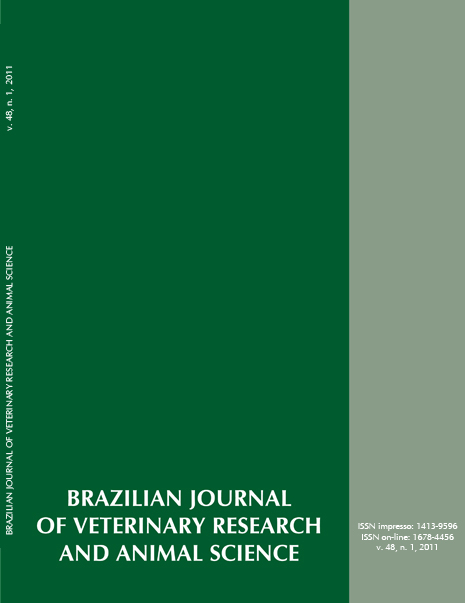Adaptation of the gill epithelium of an euryhaline fish, the guppy (Poecilia vivipara), to freshwater
DOI:
https://doi.org/10.11606/S1413-95962011000100001Keywords:
Guppy, Gills, Salinity, Mucous cells, MorphologyAbstract
The south-american euryhaline fish Poecilia vivipara (BLOCH; SNEIDER, 1801), the guppy, is found both in estuary and river waters, which suggests high adaptability to environments of different salinity. In this work we studied the adaptation of the interlamellar, bars and rakers epithelia of the gills of estuary fish to freshwater conditions. The results reveal that the gill epithelia of Poecilia vivipara can adjust itself to freshwater by decreasing the VP of mucous cells of the interlamellar epithelium and increase the volumetric proportion (VP) of chloride cells. However, there was no evidence of similar morphological alteration in the rakers region. The epithelia of the rakers appears to be part of a different compartment that is less sensitive to variation of salinity.Downloads
Download data is not yet available.
Downloads
Published
2011-02-01
Issue
Section
UNDEFINIED
License
The journal content is authorized under the Creative Commons BY-NC-SA license (summary of the license: https://
How to Cite
1.
Sabóia-Moraes SMT de, Saldiva PHN, Silva JRMC da, Yamada Áureo T, Aloia TPA, Hernandez-Blazquez FJ. Adaptation of the gill epithelium of an euryhaline fish, the guppy (Poecilia vivipara), to freshwater. Braz. J. Vet. Res. Anim. Sci. [Internet]. 2011 Feb. 1 [cited 2024 Apr. 26];48(1):5-13. Available from: https://www.revistas.usp.br/bjvras/article/view/34370





